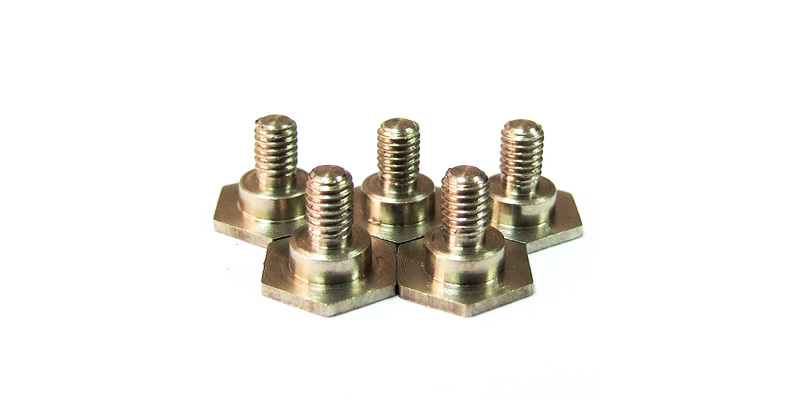- Contact Innally, Let you purchase forgings in China more favorable prices, products more assured!
- Hotline:+(86)15038323776 Email:innally@innally.com
What are locomotive bolts and nuts?
- Category: Locomotive forging, Steel forgings
- |
- Date: 24/08/2023
Locomotive bolts and nuts are commonly used in locomotive manufacturing and maintenance. They play a vital role in the process of assembly, disassembly and fixing of locomotive.
- Can be customized according to the specific model
Product Details
Locomotive bolts and nuts are commonly used in locomotive manufacturing and maintenance. They play a vital role in the process of assembly, disassembly and fixing of locomotive. In this paper, the definition, characteristics and important role of locomotive bolts and nuts in locomotive industry will be introduced in detail.
First of all, the locomotive bolt and nut is a fastening connector, which is composed of two parts: bolt and nut. A bolt is usually a head screw with a thread, and a nut is a part with an internal thread. By threading the bolt through the object and screwing in the nut, a firm connection and fixation can be achieved.

One of the characteristics of locomotive bolts and nuts is variety. Taking into account the various forces and vibrations endured by the locomotive during operation, bolts and nuts for different positions and purposes have their own specific dimensions, materials and thread types. For example, the engine section needs to withstand greater torque and vibration, so the bolts and nuts used in this area need to be stronger and more durable. Different models and brands of locomotives may have slight differences, so the selection and use of bolts and nuts need to be reasonably matched according to the specific situation.
The function of locomotive bolts and nuts is mainly reflected in the following aspects. First of all, they can fasten the various components of the locomotive to ensure the structural safety and stability of the locomotive in operation. For example, the wheel and the axle are connected by bolts and nuts to enhance the stability and safety of the locomotive running on the railway.
Secondly, locomotive bolts and nuts can also achieve the disassembly and maintenance of mechanical parts. When the locomotive needs to be repaired and maintained, by loosening the bolts and nuts, you can quickly remove the parts that need to be repaired, and replace or repair the related parts. This greatly simplifies the process and time of locomotive maintenance work.
Thirdly, locomotive bolts and nuts play an important role in the manufacturing and assembly process of locomotive. The assembly of a locomotive is a complex and delicate process that requires the various components to be correctly connected together. As one of the most common connection methods, bolts and nuts can quickly and reliably complete the assembly work of the locomotive.
All in all, locomotive bolts and nuts as common connectors play an important role in locomotive manufacturing and maintenance. They ensure the safe and stable operation of the locomotive by fastening and fixing the various parts of the locomotive. At the same time, in the process of disassembly, maintenance and assembly of the locomotive, the locomotive bolts and nuts can also play a practical role. Therefore, it is essential for locomotive builders and maintenance personnel to be familiar with and use bolts and nuts correctly.
ayu
INNALLY mainly provides you with various types of cast and forged parts products. Welcome your inquiries! innally@innally.com
Related Products
Search
Forging center
- Steel forgings
- Aluminium alloy forging
- Titanium alloy forging
- Stainless steel forging
- Copper forging
- Automotive forgings
- Locomotive forging
- Bicycle forgings
- Motorcycle forging
- Rigging and fasteners
- Bearing forging
- Electric power fittings
- Marine forging
- Mechanical forgings for metalworking
- Mining machinery forgings
- Marine engineering forgings
- Construction machinery forgings
Popular product

© 2025. All Rights Reserved.






